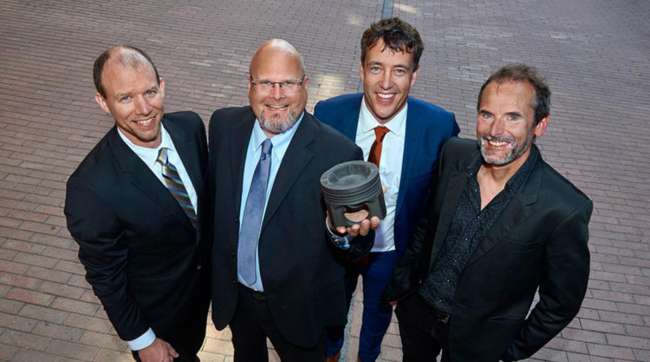Senior Reporter
Volvo Touts New Piston Design That Helps Enhance Fuel Efficiency

A new design in engine pistons is increasing fuel efficiency and reducing particulate matter in Volvo Trucks North America’s heavy-duty D11 and D13 engines, the company said.
The patented “wave” design is a new wrinkle for the internal combustion engine that has been in existence for 140 years, said Volvo Group, VTNA’s Gothenburg, Sweden-based parent company.
The design has “halved the quantity of soot particles emitted by the engines and has also reduced fuel consumption by an average of 2%,” the manufacturer said.
“Customers want to know where the improvements came from,” John Moore, VTNA’s product marketing manager of powertrains, told Transport Topics. “We show them how the combustion can be changed and how you can achieve significant results from that. Plus, we like to show we used our SuperTruck funding to do combustion research and then came up with a new style piston.”
The development of the piston — as well as turbo compounding and a common-rail fuel-injection system — was supported by the SuperTruck cost-sharing program, sponsored by the U.S. Department of Energy, VTNA said.
SuperTruck is a DOE project to develop and demonstrate cost-effective technologies that more than double the freight efficiency of Class 8 trucks. It is now in its second phase.
The wave design is VTNA’s most efficient piston and there is a good chance it will be part of Volvo’s SuperTruck II effort “unless they come up with another design between now and then,” Moore said.
“What’s really interesting is that we are always finding new ways to make diesel engines more efficient. The piston doesn’t look that complicated, but the job it does is truly amazing,” he added.
Volvo Group awarded its 2017 Volvo Technology Award to engineers Jan Eismark and Michael Balthasar, who developed the new design.
The result of their work was the inclusion of ridges or waves in the piston crown. The piston has six of these ridges and the injector, which is located in the center of the cylinder at the top of the piston, has six orifices to ensure the fuel is sprayed between the ridges that lead the flames into the center, Volvo Group said.
In the case of a standard piston, fuel is sprayed toward the sides of the cylinder, and the combination of heat and pressure causes the fuel to ignite before it reaches the cylinder wall. When those flames collide, they compete for the available oxygen. At the same time, the oxygen in the center of the combustion chamber is never fully used, according to Volvo Group.
“For this reason, we wanted to identify a method of leading the flames into the center of the combustion chamber to make better use of the oxygen there,” Eismark said in a statement.
Before the new design could find its niche in everyday use, Volvo Group said it had to develop the piston-manufacturing methods to achieve the right balance between the cost of the parts and the benefits for customers; that was followed by thousands of hours of testing to refine the design and verify the durability of the new concept.
Greensboro, N.C.-based VTNA had a year-to-date market share of 9.6% of U.S. retail sales of Class 8 trucks through May, according to WardsAuto.com. That was up from a 9.4% share in the same 2016 period.




